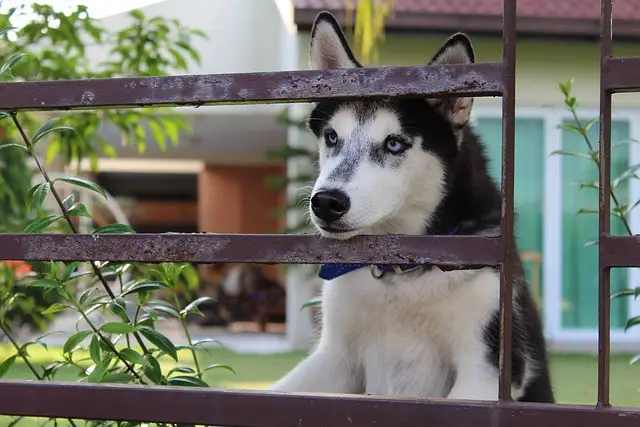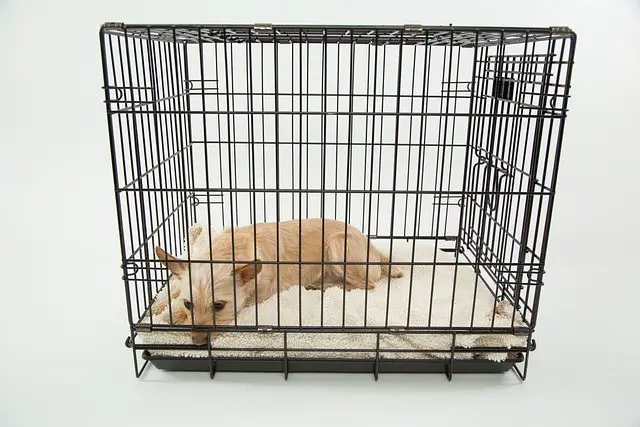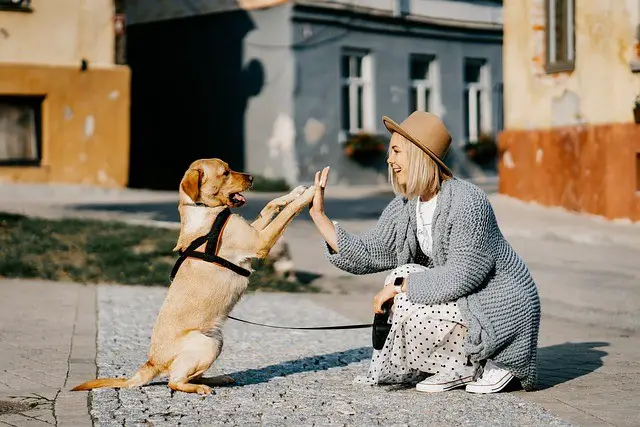This post may contain affiliate links. Please read our disclosure.

Article Contents
Choosing the Right Size Dog Crate
The best dog crate is one that is big enough to allow free movement and is comfortable enough for the dog. It should also be easy for the dog to get out of easily.
But how do you know the best crate size for a large dog? Let’s dive into the different types of crates and find out!
This table will help you choose your crate according to your dog type.
| 18″ Crate (46cm) | · Toy Breeds and
· small breed puppies, · teacup Yorkshire Terrier, · Toy Poodle, · Maltese, · Maltipoo
|
| 24” Crate (61cm): | · Chihuahua,
· Miniature Dachshund, · Jack Russell, · Shih Tzu, · Yorkshire Terrier · similar breeds · Boston terrier · similar breeds · Jack Russell terrier
|
| 30” Crate(76cm): | · Westie,
· Beagle, · Standard Dachshund, · French Bulldog, · Border Terrier · basset hound
|
| 36” Crate(91cm): | · Cockapoo,
· Springer Spaniel, · Bulldog, · Labradoodle and similar breeds · Bernese mountain dog · Labrador retriever
|
| 42” Crate (106cm): | · Labrador,
· Dalmatian, · English Bull Terrier, · German Pointer and similar breeds · Golden retriever · border collie
|
| 48” Crate (121cm): | · German Shepherd,
· Bullmastiff and similar breeds
|

Types of Crates for Large Dogs
When choosing the most appropriate crate size for a larger dog, you have several options to go with. Primarily, there are two dog crate types: wire dog crates and plastic dog crates.
You may also come across metallic crates but the two aforementioned are the most dominant in the market today.
Both types of crates are designed with safety in mind. However, you can get varying sizes for each. Below are some details about each type of crate.
Wire Crates
Wire crates vary in shape and size, ranging from small 18 by 12 inches crates to extra-large sizes of 54 by 36 inches.
These wire crates allow plenty of room for your dog to move around and stretch out comfortably.
However, if you have a very active and energetic pup, you may want to consider getting a custom-size wire crate. This can be made to match your pup’s specific needs.
Plastic Crates
Compared to wire crates, plastic crates are typically smaller. They also come in an enclosed design thus offering less ventilation.
These plastic crates range in size from medium 24 by 16 inches crates up to extra-large crate sizes of 36 by 24 inches.
So, if you have a large breed dog that requires a lot of space, plastic crates are not a good choice as there will likely not be enough room for your pup to move around freely.
How to Choose the Right Size Crate for Your Dog
When selecting the proper dog crate size, there are several considerations. Depending on the breed and age, each dog needs a space that is both comfortable and safe.
Start by measuring the size of your pet to ensure that the length of the crate will provide a spacious area enough for standing up and lying down.

Again, consider the height of the walls. The floor-to-ceiling distance should be tall enough to allow your pup to stand without his or her head touching the top.
Further, consider how accessible the crate will be based on where it will be placed in your home. Look for back- and side-entry crates to guarantee easy access while providing an additional sense of security.
Ultimately, no matter what type of crate you choose, make sure it’s large enough to suit your pup’s comfort requirements with room to grow if need be!
The Benefits of Using a Crate for Your Dog
The use of a crate for your dog is one of the most effective, safe, and comfortable ways to provide your dog with space for rest and shelter.
It is also a unique training style for your dog. You simply ensure that the dog is secured in the crate for short amounts of time to enforce habit.
Such training comes with several benefits, including the reduction of inappropriate behavior. You will easily eliminate destructive chewing while encouraging house training. All this while increasing your pet’s overall security.
Additionally, crating gives your pup lessons on environment control. You get to practice commands like “calm down”, “settle”, and others inside the crate kennel.
Be advised that you should be gradual and gentle when introducing your dog to long-term confinement.
Avoid leaving them confined beyond what might be considered reasonable. A 3 to 4-hour confinement limit at a time is generally considered ok.
How to Train Your Dog To Use The Crate
Training your dog in a crate is a great way to ensure their safety and establish rules within the home. The crate should be used exclusively for positive reinforcement experiences, such as quiet time or treats.
When introducing your dog to the crate, reward them with treats whenever they spend time in there.

Keep training sessions short and gradual; if you start with too much time at once, it may result in your pup feeling overwhelmed.
As time progresses, reward them more sporadically until they are spending most of their time contentedly in the crate without any rewards.
With patience, consistency, and positive reinforcement experiences, you can easily teach your pup proper crate usage.
Tips for Choosing the Right Type of Crate Size
Choosing the right type of crate for your pet is not only important for their safety, but it can also provide them with a sense of comfort while they are in transit.
Before making your choice, be sure to measure your pet and select a size that allows them to stand up and turn around comfortably while inside.
If the crate will be traveling on planes, check with the carrier regarding specifications before purchase. Make sure that the door latches are secure and durable, as well as easy for you to open and close.
Additionally, if you plan on using the crate for multiple uses over time (such as house training or travel), look for one that folds or collapses so that you can store it easily when not in use.
Keep in mind factors such as weight, material, ease of use, and overall comfort before making your selection so that you know that your pet travels in style without sacrificing safety.
Crate Training Tips for Puppies and Adult Dogs
Crate training can be an effective tool to help both puppies and adult dogs learn house training, establish good sleeping patterns, and provide a safe retreat from situations with which they are uncomfortable.
For successful crate training, it is important to have the right size of crate for your dog and introduce it gradually.
Always use treats or verbal praise when finishing off any entry or exit sessions. This helps create positive associations with the crate and the process.
If your dog shows signs of distress during times spent in the crate, remove them immediately and consider taking a slower approach.
For instance, you can introduce distractions such as soft music and toys before making progress on longer amounts of time spent crated.
These tips can help ensure successful crate training no matter what phase of life your furry friend is in!
How To Keep Your Dog Safe In His or Her Crate
It’s crucial to keep your dog secure while they’re in its crate. The first step is to properly secure the crate to guard against accidental tipping or bumping.
A kind environment for your pet can also be created by making sure there is enough ventilation and comfortable bedding. Your dog may feel safer if you include some of its favorite treats or toys.
Additionally, keep in mind that energetic puppies can be daring explorers who might not hesitate to venture out into strange surroundings if the door is left open and unattended.
By keeping these suggestions in mind, you may ensure your dog’s safety while spending time in the crate while also having confidence in his or her happiness and security.
Conclusion:
At first, choosing the proper dog cage size may seem like an impossible undertaking. However, if you take into account all the many crates offered and are aware of the specific requirements of your dog, you should have no trouble locating one that is ideal for them.
An extra-large wire crate will likely be the best option for a majority of large breed dogs as it will offer more than enough space while yet allowing proper airflow within the cage. Please don’t hesitate to contact us if you have any more questions or concerns about picking the appropriate size crate for your pet; we’re happy to help!
 Petnile Comprehensive Pet Care Guides
Petnile Comprehensive Pet Care Guides



